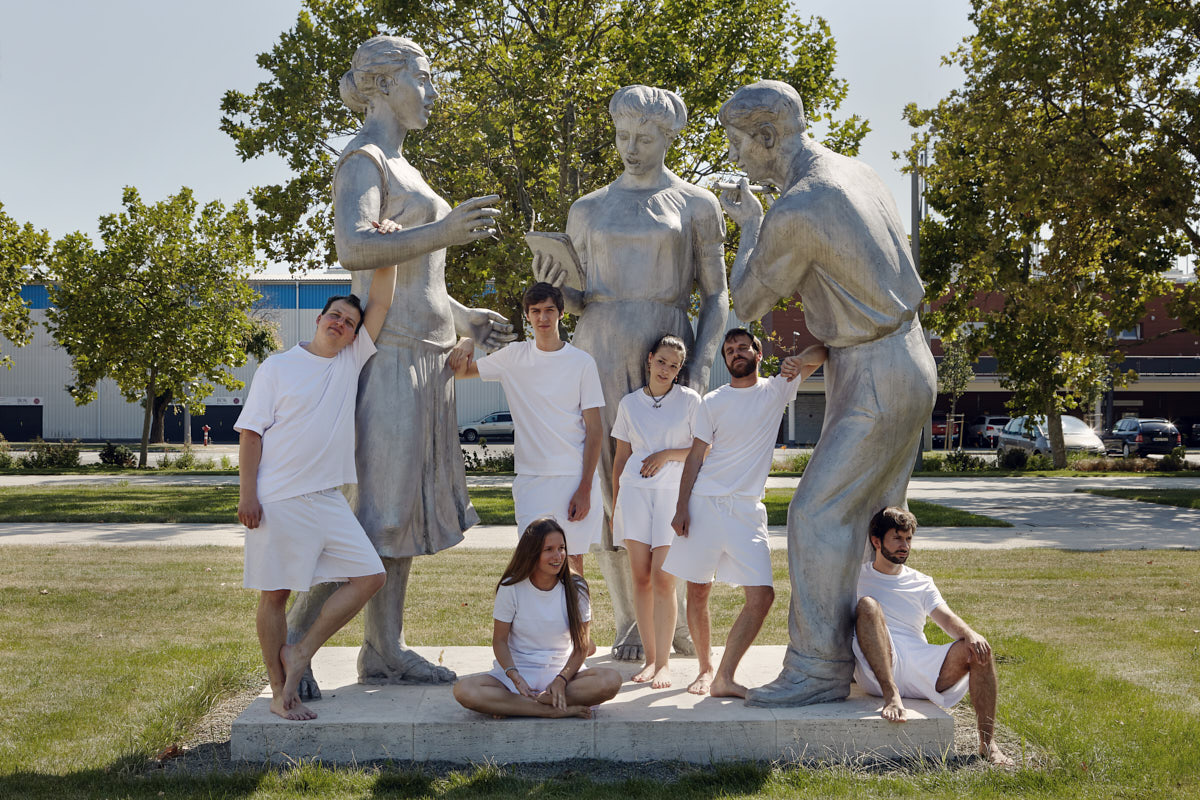Documentary choir theater
With: Judit Böröcz and Máté Szigeti
— Premier: Trafó Budapest, 2021
Makris Agamemnon's statue, Singing Youth was erected at the passage leading to the People’s Stadium in 1953 and it has been standing there until this day along with other statues, surviving the regime change, when many artworks made in the socialist era were removed from public space. The stadium was torn down and a new one, the Puskás Arena was built, re-using crushed concrete from its predecessor. Singing Youth, double life-size aluminium figures of two girls and a boy with a flute, bear witness to the last 70 years of Hungarian history full of turbulent times, during which music and culture in general remained a key tool for politicians to communicate or promote their ideas, ideologies.
The People’s Stadium (1953) represented the success of the first five-year plan, the Puskás Arena is the symbolic building of the System of National Cooperation. They were both built using public funds; the first dedicated to the people, the second to the nation. These two phrases seem similar but they convey different interpretations of us. Singing Youth took popular movement songs from 1945-56 and pop, rock songs from 2010-21 (associated with the regime) as a departure point along with public speeches from those in power to make a collage of text and music dealing with these interpretations.
The three figures of Singing Youth are doubled on stage: our world as represented in these songs, come to life through the performance of six young singer-performers.
Singing Youth
Written and directed by Judit Böröcz, Bence György Pálinkás, Máté Szigeti
Music by Máté Szigeti
Choir director: Péter Fehérváry
Choreographer: Zsófia Tamara Vadas
Vocalists: Benjamin Bozi, Péter Fehérváry, Maxim Jurin, Katalin Mezei, Eszter Sokhegyi,
Máté Szilvay
Light technician: Balázs Szabon
Video: Sári Ember
Photo: Sári Ember, Dániel Pék
Translation: Anna Bentley (EN)
Production: Trafó, Staféta
Music by Máté Szigeti
Choir director: Péter Fehérváry
Choreographer: Zsófia Tamara Vadas
Vocalists: Benjamin Bozi, Péter Fehérváry, Maxim Jurin, Katalin Mezei, Eszter Sokhegyi,
Máté Szilvay
Light technician: Balázs Szabon
Video: Sári Ember
Photo: Sári Ember, Dániel Pék
Translation: Anna Bentley (EN)
Production: Trafó, Staféta




